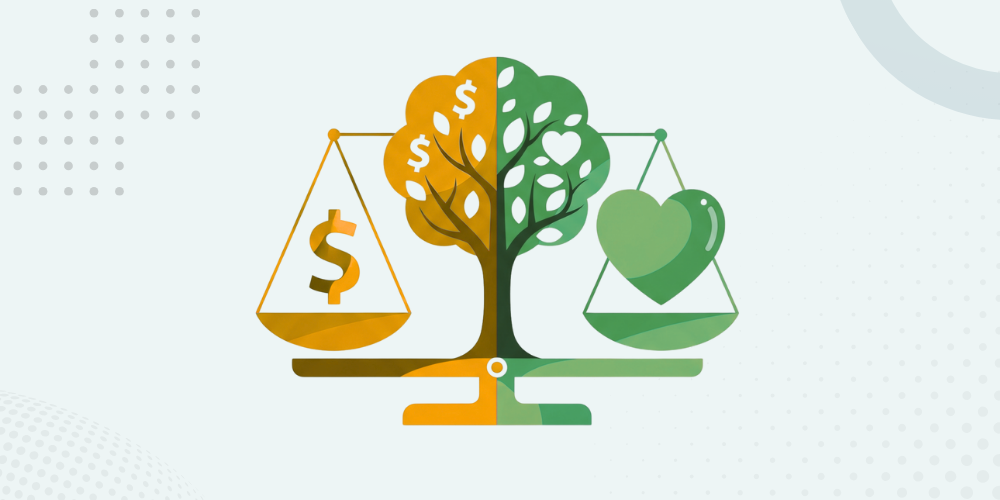Mapping Gender, Race, and Behavior
Every human being has a unique set of strengths that guide their life and work. We decided to find out if gender and background play a role.
Our purpose-driven software and behavioral experts work together to meet your business needs best.
Our app lets you toggle between insights most relevant to the employee or client experience.
Key behavioral insights can be integrated into your favorite web tools and custom applications.
Our behavioral experts can help you get the most out of our technology through training programs, customized workshops, and more.
Register for one of our online events to get focused guidance on the practical uses of our platform and have your questions answered.
Learn how we use psychometric measurement to accurately predict a person’s personality traits for identifying their behavioral style and money attitudes.
Reinforce your understanding of how BeSci Tech can create a life-changing shift in the way people think, make decisions, run their businesses, and relate to others.
Get a little background on our business and take a peek at the behavioral style reports of our team members!
Got questions? We're available by phone, email, or chat to discuss any of our behavioral solutions.

To say that one “knows” anything about anyone based on gender would be quite bold, don’t you think?
After all, every human being is unique. Some differences may be obvious, and others nuanced, but we are individuals…not warm bodies sortable by categories based on gender or anything else, right?
While our uniqueness is indisputably true, science does provide us with a certain amount of guidance when it comes to human behavior. In fact, by analyzing the behavioral data of 65,000 randomly selected individuals, we found that there are notable differences in what each gender may inherently bring to the table. It’s not the first time it has been suggested that men and women possess biological and psychological differences. But now we have detailed gender-based insights that can be used to build stronger organizations.
Let’s delve into what we discovered about the divergent needs of men and women, backed by the insights from DNA Behavior's Natural Behavior Discovery Process. We’ll show you the power of gender diversity and conscientious “behavioral matchmaking” in creating exceptional businesses!
What We Learned About Gender Differences
While we acknowledge that every individual is unique and cannot be solely defined by their gender, our study confirmed the existence of gender-based differences as measured across the ten core DNA Unique Styles.
Men: We found that men more frequently show up in the following behavior styles, indicating they are more results-driven: Adapter, Influencer, Initiator, Strategist.
Women: We found that women more frequently show up in the following behavior styles, indicating they are more relationship driven: Community Builder, Engager, Reflective Thinker, Relationship Builder, Stylish Thinker.
The Power of Gender Diversity
Understanding behavioral variances, whether gender-based or person-based, allows professionals to optimize interactions and tailor their approach. Acknowledging them is not about perpetuating stereotypes or promoting inequality, but rather about recognizing and respecting the inherent dissimilarities that exist…and that there is power in that diversity. We have the opportunity can create inclusive environments that maximize the potential of both men and women while making our businesses better.
We start with eight DNA Factors as we begin to analyze patterns of behavior. In looking at those key elements in our study, we were able to determine which gender has a greater propensity for a certain behavior.
DNA Factor Scores:
Risk (+17% men): Men, on average, may lean towards risk while women may lean towards caution. Consider this when designing projects or assignments requiring calculated risks and making financial and investment decisions.
Command (+12% men): Men, on average, tend to take a more assertive approach, while women tend to be more cooperative. Consider this when evaluating whether a leadership role may require more authority and direction or could benefit from a more a collaborative approach.
Pioneer (+17% men): Men, on average, may be naturally more goal-driven and competitive, while women have a greater tendency to be content. Consider this when innovation is desired or if you seek to cultivate a spirit of exploration within your organization.
Creative: (+17% men): Men, on average, have a higher propensity to be imaginative and enterprising than women. Consider this when unique approaches to problem-solving are needed, keeping in mind that different perspectives (even if less creative) can foster rich and varied output.
People (+13% women): Women, on average, tend to be more outgoing and prioritize interpersonal relationships, while men tend to focus more on tasks. Consider this if you seek to create an environment that values both task-oriented and people-oriented approaches to foster effective collaboration.
Patience (+16% women): Women, on average, exhibit more patience and relationship-building behaviors, while men tend to be more goal-driven. Consider this if your organization desires to build a strong people-centric culture that combines productivity with job satisfaction.
Trust (+15% women): Women, on average, tend to be more trusting, while men may be more skeptical. Consider this when building teams so that you can create effective strategies to build trust and forge stronger relationships within your organization.
Structure (+3% women): Women, on average, are only slightly more planned than men. Consider that both men and women may need structure and organization to excel in their work environment.
Want a Deeper Analysis?
Each of the factors above influence how a person does what they do and how they do it. It has a direct impact on Communication Styles, Work Talents, Leadership Styles, Decision-making Processes, Financial Behavior, Work-life Balance, Problem Solving, and Interpersonal Relationships.
To better understand how gender plays a role in these areas and how organizations can consciously adapt to their differences, See the Detailed Results of Our Study.
Opposites Attract Theory
Not coincidentally, our study included a look at the behavioral styles of married couples. We found that on average, they were 29-35% different in terms of their population-weighted scores on each of the eight DNA Factors. That confirms that opposites attract in marital relationships!
In business, opposites may or may not attract, however, they certainly complement one another. People with the same traits typically connect more easily, but it’s behavioral diversity that will balance a team or organization, just as it does in marriage. For the best outcomes, you may need to strategically match people who have different traits. We call that “behavioral matchmaking.” Imagine what would happen if there was no behavioral diversity in your organization. You could be easily led down a destructive path…like when every member of your team has a high propensity for risk-taking with no one to balance that behavior with an ounce of caution!
Accounting for Individuality
Our entire business is built around uncovering the behavioral minutiae that makes every human unique. While this study provides unbiased, science-based data that underlines averaged differences between men and women, it does not account for individuality. So, we strongly advise against taking broad-stroke actions based on the results.
Instead, use it to increase your understanding of how gender may play a role in how a person does their job. Recognize that a different approach may not be your approach, a standard approach, or a very popular approach…but it could be the most effective one for that individual. Know that men and woman may do things differently, prioritize things differently, and communicate differently. But understand that the closer one is allowed to operate in alignment with their true nature (gender or otherwise), the more effective they will be at literally every task put in front of them. And they will do it with less stress!
Want to learn about your own behavioral style?
Future Gender Studies
We are conscious of the fact that this study only looks at gender through a binary lens. So, while these results rely on traditional gender definitions, we also understand the broader spectrum of gender identity. We would love to be able to add this important dimension to our research.
If you or someone you know would like to take part in future studies, please Contact Us.
*The DNA Natural Behavior Discovery uses the Forced Choice Scoring Model to ensure that the outcome is both unbiased and gender-neutral.

Every human being has a unique set of strengths that guide their life and work. We decided to find out if gender and background play a role.

To help clients avoid burnout on their path to success, business coaches must be proficient in helping them identify stress triggers.

The third generation of behavioral finance has shifted focus, so we can make smarter financial decisions that truly serve our well-being!